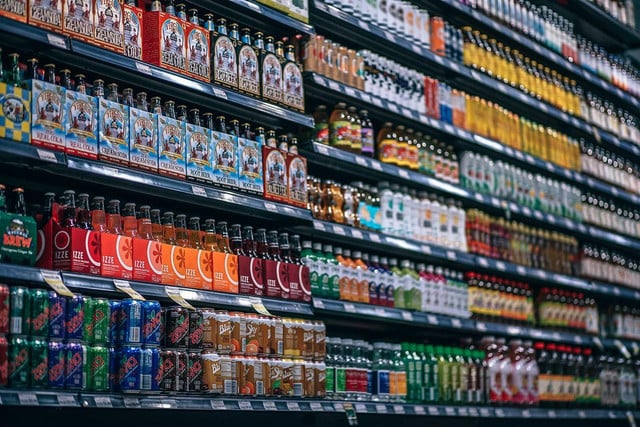What is greenwashing, and do you unknowingly support it? Companies use this manipulative tactic to appear eco-friendly — here’s how you can fight it.
What is greenwashing? Similar to rainbow-washing, greenwashing is a marketing strategy used by companies as a ploy to win over eco-conscious shoppers. As conscious consumers become more educated on the effects of their purchases, many are making a move to quit partaking in fast fashion and other wasteful industries, and instead opt for more sustainable products. Some companies use this to their advantage and support sustainability to increase their sales.
While this may sound like a good thing, it doesn’t always translate to actual progress. Instead of truly making a change and working to reduce waste and carbon emissions, many companies simply put up a symbolic facade. This misleading marketing is referred to as greenwashing. Greenwashing leads to well-meaning people purchasing from unethical and unsustainable brands when they’re trying to do the opposite. Greenwashing comes in many forms, and it can be convincing.
Read on for what you need to know.
You may also enjoy: Green Hushing on the Rise: How Problematic Is This Greenwashing Twin?
What Is Greenwashing? The Scientific Concept

A study published in the Environmental Sciences Europe journal found two main types of greenwashing: claim greenwashing and executional greenwashing. Both can happen on two levels, the firm-level and the product- or service-level.
Claim Greenwashing
Claim greenwashing happens when advertising makes false claims, omits relevant information or is intentionally unclear. The greenwashed claims can focus on different aspects, like the product itself, its processes of production, or a combination of those and other aspects. Environmental marketing firm TerraChoice has classified seven often-cited ‘sins’ of greenwashing, all product-level greenwashing claims:
- Hidden trade-off: when a product is ‘green’ based on certain attributes but not others
- No proof
- Vagueness
- Worshipping false label: when label-like icons or images are used on the product
- Irrelevance
- Lesser of two evils: as when a fuel-efficient sport-utility vehicle is better than an inefficient one
- Fibbing (outright lying)
Another study has used research on the oil and gas industry to elaborate six more green marking sins.
On the firm-level, five types have been identified:
- Dirty business: when an unsustainable business promotes its one green product
- Ad bluster: exaggerating green achievements to divert attention from real sustainability issues
- Political spin: the effort to change regulations in order to benefit the company’s sustainability status
- It is the law, stupid!: promising or boasting with green achievements that are or will soon be required by law anyway
- Fuzzy reporting: using sustainability reports as an incontestable, one-way communication channel to slant the public image of a company’s sustainability efforts.
Executional Greenwashing
The concept of executional greenwashing is fairly new and was first described in 2015: a company, instead of making verbal claims about the sustainability of their production or services, uses nature-evoking imagery. Whether intentional or not, the reader associates such pictures of endangered species, clear water creeks, and so on with ecological practices and is thereby deceived by the company’s marketing.
Greenwashing: Examples of Common Strategies



To make it easier for you to recognize whether a company is trying to trick you into thinking it’s eco-conscious, here are common examples of greenwashing.
What is greenwashing? Examples:
- Showy Statements: greenwashing is often accompanied by grandiose promises and declarations of appreciation for and dedication to the environment. You may see something along these lines on social media, in a press release or in an ad campaign. While this may not be problematic on its own, if these statements are not backed up by actual efforts, it’s simply misleading consumers.
- Vague Slogans: a tell-tale sign of greenwashing is the use of vague promises. When companies advertise their products as green, eco-conscious, sustainable, eco-friendly or ethically made, remember that these statements are not regulated. Companies can advertise their goods as seemingly sustainable even if they have no evidence of any action. There are rarely legal ramifications for doing this, so companies are intentionally vague to make money. If they don’t explain what makes their product sustainable, it’s probably not.
- Ambiguous Plans: plans for the future regarding cutting emissions and reducing waste are great, but there needs to be follow-through. When companies promise to do better but provide no clear targets or updates on their goals, it’s greenwashing. Watch out for phrases like “want to improve,” “aim to do better” and other vague promises.
- Dirty Business: one form of greenwashing occurs when companies make an effort to produce a truly sustainable line or specific product. The brand will put lots of money and effort into the campaign to make a product-level claim to win over eco-friendly consumers. However, the brand does not change anything else about the rest of their products. They put their sustainable products at the forefront of their marketing to create the facade that the entire brand is sustainability-focused.
What Companies Are Guilty of Greenwashing?



It may not come as a shock, but many industry-leading companies aren’t always the most environmentally conscious. Yet, they have vast resources to invest in green marketing, leading to greenwashing. Some examples:
- Nestlé has been accused of greenwashing for their 2018 statement sharing their goal to use 100 percent recyclable or reusable plastic by 2025. Unfortunately, Nestlé’s ambition did not contain any details on their efforts to reduce and eventually completely eliminate single-use plastics. In 2020, Nestlé remained one of the top global plastic polluters.
- Coco-Cola produces more than double Nestlé’s plastic waste, but they have put loads of time and money into advertising themselves as an ethical, sustainable brand. In social media, on tv and in printed advertisement, Coco-Cola has claimed to be working toward sustainable solutions and reducing its carbon emissions, but remains a top corporate plastic polluter. In fact, the Earth Island Institute is suing Coco-Cola for greenwashing in their World Without Waste campaign. Learn more: The Dark Side of a Soda Giant: 5 Coca-Cola Controversies Explained
- H&M has a conscious collection, a classic example of greenwashing. This fast fashion company has exploited the lack of regulation in green terminology to make certain products seem like ethical purchases. If you take a closer look, there is no explanation of how or why the conscious collection items are allegedly more sustainable than the rest of the store, rendering the entire collection meaningless. This is a ploy to mislead consumers.
Avoid Greenwashing With Conscious Consumerism



Once you understand what greenwashing is, the key is to pay attention when shopping. When making an effort to purchase from sustainable, ethical companies, don’t stop at the first sight of commitment to the environment. Look at the tag or check the website and check for detailed information regarding ingredients, materials, packaging, emissions, targets, policies, donations, goals and success stories. Try not to fall fall for ambiguous, empty promises.
Better yet, do your research beforehand and find some truly sustainable, ethical companies you can feel good supporting. There are many socially conscious brands available. Start with our Purchase Advice, and try these sustainable jewelry brands or some of our favourite affordable, sustainable clothing and gender-neutral clothing.
You can also look for labels like the EPA’s Ecolabel certifications. They include brands that rate energy efficiency, like the Energy Star, or transportations related emissions like the SmartWay® label. A product might be very water-efficient, but entail long transportation routes. Read labels and certifications before making a purchase. There are even websites and apps available that offer brand ratings and details of their sustainability policies. Search for clothing company ratings using Good on You and the Fashion Revolution’s Transparency Index.
Vote with your dollar!
Read more:
- Online Video Streaming Isn’t Sustainable — Here’s Why
- 10 Everyday Green Living Ideas: Sustainability on a Shoestring Budget
- Why Drink Fair Trade Coffee? Facts, Myths, and Brands
Do you like this post?









